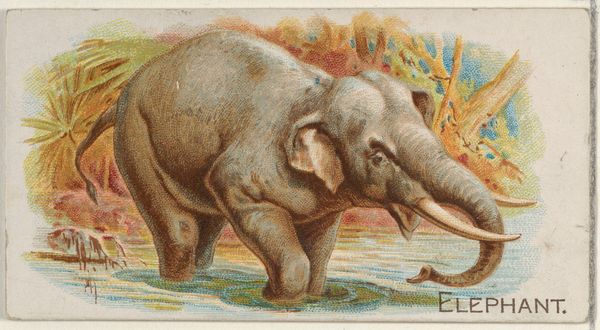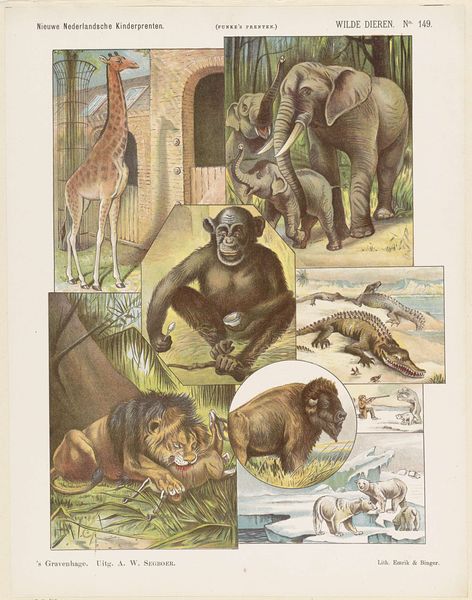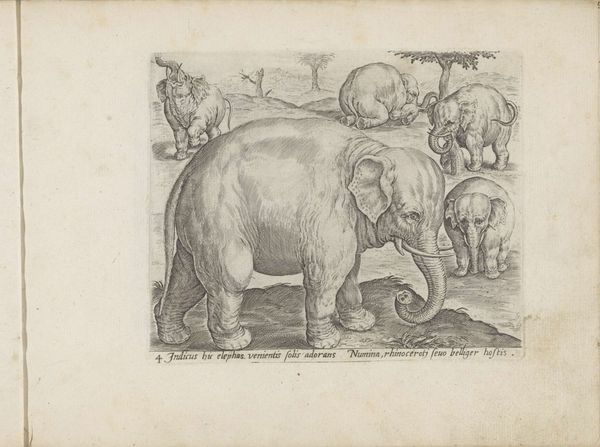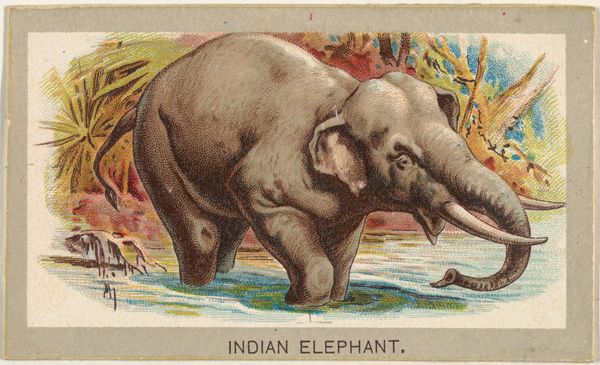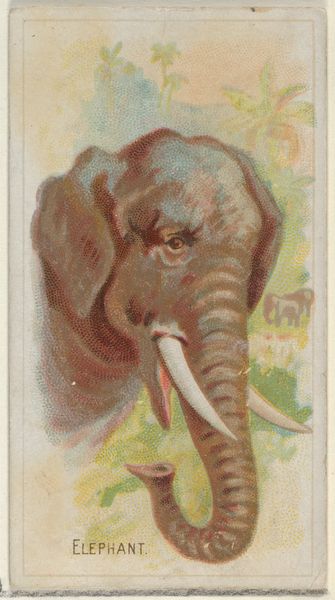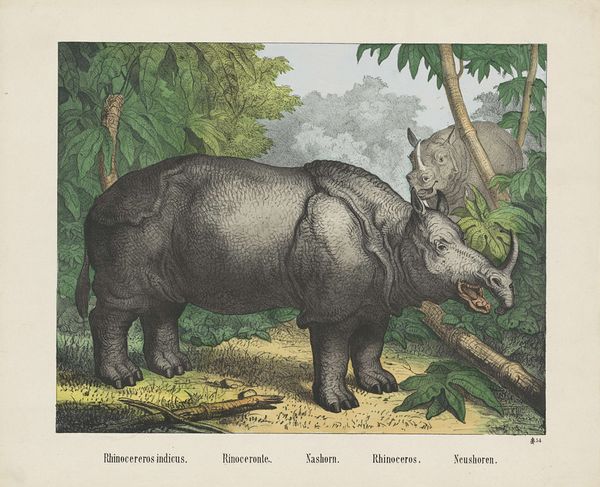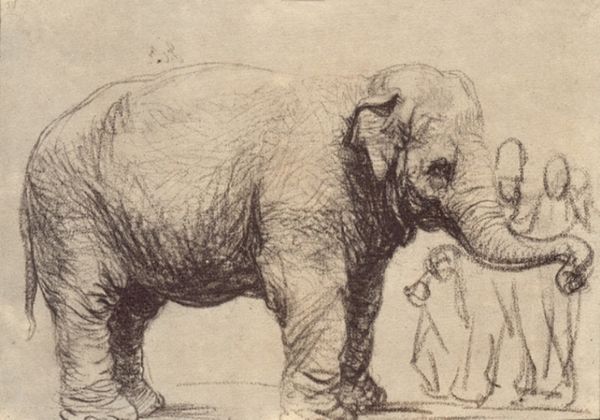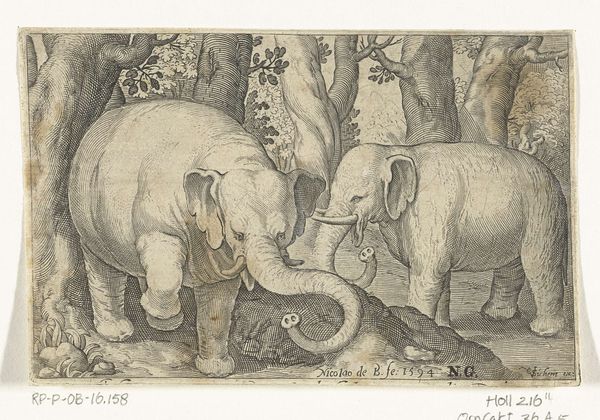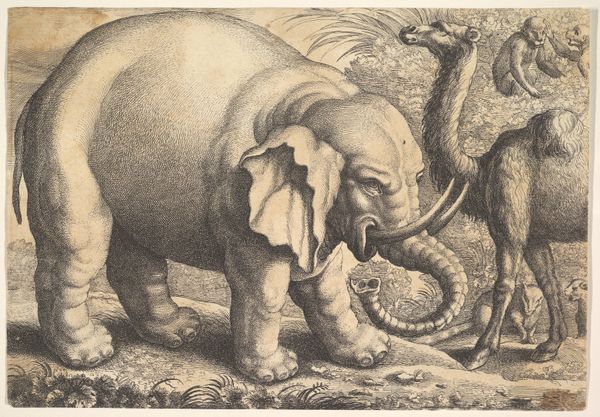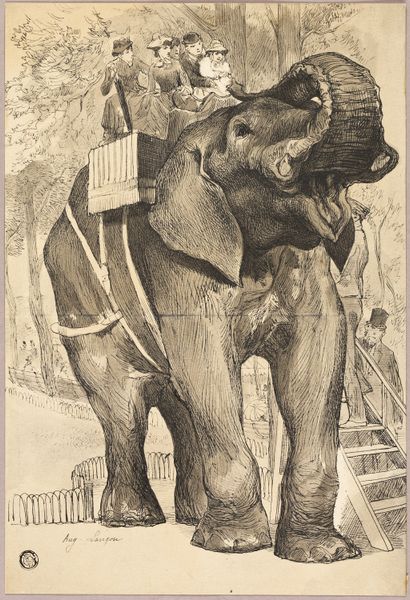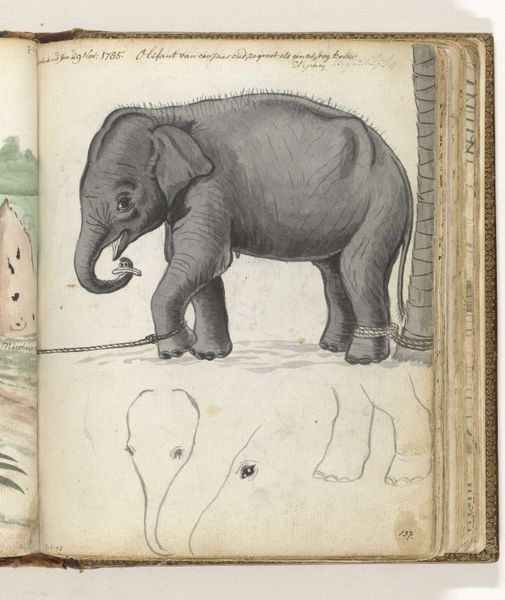
lithograph, print
#
lithograph
# print
#
landscape
#
genre-painting
#
realism
Dimensions: height 400 mm, width 270 mm
Copyright: Rijks Museum: Open Domain
Editor: Here we have “De Olifant,” or “The Elephant,” a lithograph print made sometime between 1894 and 1959, currently residing at the Rijksmuseum. It features a mother elephant and her calf. It has an illustrative, almost whimsical quality. What social or historical narrative might this artwork be engaging with? Curator: This image, while seemingly innocuous, presents an interesting lens through which to examine the historical context of colonialism and the exoticization of Africa. Consider the date – the late 19th to mid-20th century – a period of intense colonial expansion and resource exploitation. How do you think representing elephants like this plays into that narrative? Editor: It makes me think of safaris and the way the West saw Africa at the time – a place of wildlife, adventure, and resources ripe for the taking. The slightly romanticized depiction normalizes that idea. Curator: Precisely. The artwork reduces a complex geopolitical reality to a simple image of nature. Where is any acknowledgement of habitat loss, poaching for ivory, or the displacement of indigenous populations due to colonial activities? This romantic vision is not just inaccurate but participates in a dehumanizing process. Consider how the absence of any African people from this image contributes to an "empty" and "available" narrative. Editor: That's a really uncomfortable, but insightful point. I was focused on the aesthetic and completely missed the historical and cultural implications. Curator: It's in those absences that we find the true narrative. It highlights the importance of critically examining seemingly harmless imagery, considering its production within a specific historical power structure, and its lasting impact on perpetuating harmful stereotypes. Editor: Thank you. I definitely have a lot more to think about concerning not just what's shown in the art, but also what isn't.
Comments
No comments
Be the first to comment and join the conversation on the ultimate creative platform.



